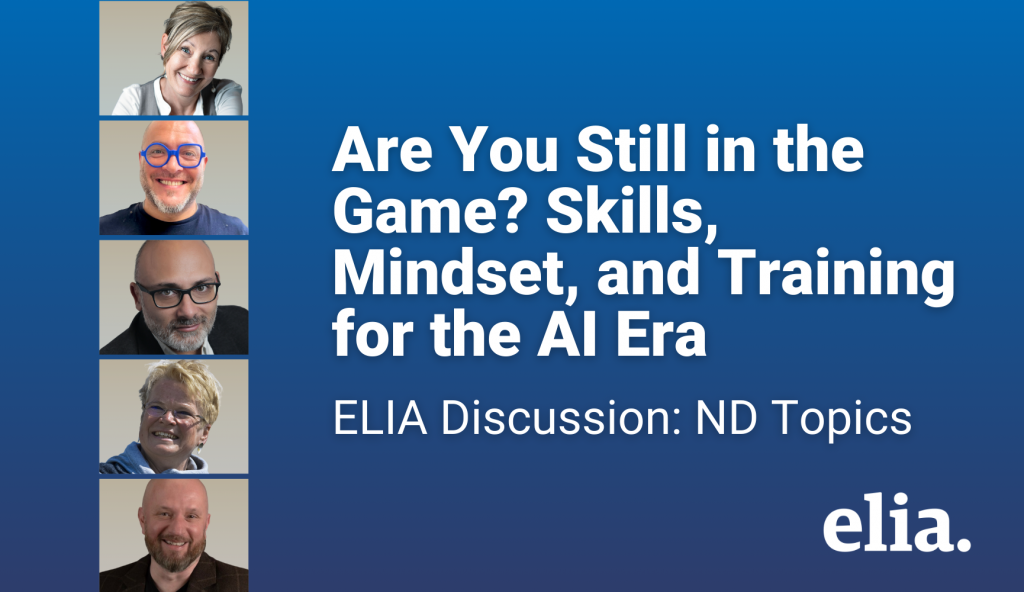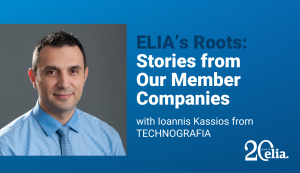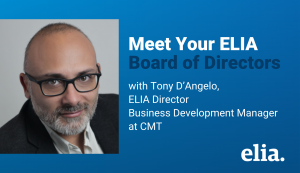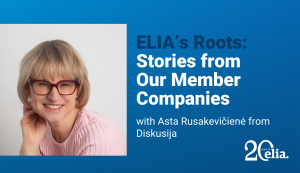In the lead-up to Networking Days 2025 in Budapest, we’re doing something new. Ahead of the event, members of the ELIA Board of Directors are meeting with the Content Committee to discuss each of the ND25 session topics. Their candid conversations form the backbone of this pre-event discussion articles series, designed to spark reflection before we gather in person.
This first meeting focused on Session 1: Opportunity Knocks – Who’s Got the Winning Hand? Mastering the shift from selling services to selling solutions. What follows is not a summary of solutions, but a snapshot of the questions, tensions, and insights that emerged — a launchpad for the discussion we’ll continue together in Budapest.
And we invite you to start now: share your thoughts on LinkedIn or with your peers. Which of these challenges feels most urgent for your business today?
The Pricing Puzzle
Pricing models were one of the first hurdles raised. Even when new approaches are introduced, many clients fall back on familiar structures.
“I tried to sell a subscription-based solution,” said Diego Cresceri (DC), “but the client still insisted on tying it to word counts. We gave them a fixed price, but it was still based on volumes. It’s a first step, but we’re not fully moving away.”
Stéphane Hue (SH) agreed: “Subscriptions can bring real value, especially in giving clients cost control and predictability. But they require us to change how we sell, and also how we think internally. We can’t just count words anymore.”
Others pointed out that even when clients like the idea of fixed costs, they still measure everything by volume. This tension shows how deep-rooted the old metrics are; yet it also signals that the desire for predictability is real. That desire may be the opening LSPs need to shift the conversation.
💡 Discussion prompt: Can technology-enhanced pricing models — subscriptions, fixed fees, or packaged offers — really replace volume-based sales, or will word counts always creep back in?
More Than Words
The group also considered what it means to move beyond services. Milena Spelta Parenti (MSP) shared a pilot project:
“We offered a subscription for multilingual output across different media—video, e-learning, avatars. At first they loved the idea. But then came the hesitation: they worried about losing control if everything was centralised with us. Ironically, they never had that control before.”
SH noted that this isn’t always about control itself: “Clients say they want control, but what they really want is visibility and independent validation. If we can show them what’s happening with dashboards and checkpoints, they’re actually fine with centralisation.”
The group agreed that the barrier is not resistance to solutions, but to how they are framed. Transparency and visibility may well be the bridge to greater trust, and a chance to shift the focus from tasks delivered to outcomes achieved.
💡 Discussion prompt: How can LSPs flip the value proposition: leading with technology and positioning services second, while still giving clients the reassurance and visibility they need?
The Bigger Picture
Anu Carnegie-Brown (ACB) drew attention to broader corporate dynamics: “When AI agendas are being driven top-down by CTOs and CIOs, our localisation contacts may not even be in a position to influence change. We’re often talking about small solutions against a much bigger tech strategy at the enterprise level.”
For DC, the question is about role clarity: “When we try to build software, we can’t compete with specialised vendors. But we can resell, bundle, and manage tools in ways that solve client problems.”
SH added: “We don’t need to become software companies. We can create value by being sophisticated users—integrators who know how to make the tech work for clients.”
If becoming a software company isn’t the path, then perhaps the real opportunity lies in positioning LSPs as connectors and trusted guides who integrate technology into clients’ strategies while keeping language expertise at the core.
💡 Discussion prompt: Are LSPs ready to become software companies—or is the real opportunity in building partnerships, reselling, and integrating into clients’ existing tech ecosystems?
Decoupling Value
One approach gaining traction is to make value more visible by “decoupling” services.
“I’ve started unbundling everything,” said SH. “Instead of hiding technology behind word prices, I sell the connectors, the review tools, the setup. Clients like it because they understand what they’re paying for; and once they’re integrated, they tend to stick.”
SH added: “If we sell connectors, integrations, and setup transparently, clients see the value. And once they’re connected, they won’t leave.”
Rather than including all the costs in word-based rates, this clarity helps clients see the long-term value of integration. It transforms LSPs from vendors of tasks into partners in systems and workflows—a stickier, more strategic position.
💡 Discussion prompt: What strategies have you seen for curating a meaningful portfolio of tools and services that adds value both for customers and for technology vendors?
Success Stories (and Lessons Learned)
Not every attempt is smooth; but there are bright spots. DC described a recent case:
“We sold a service to a hospitality client that they simply couldn’t do in-house. For them, it solved a problem they didn’t have the expertise or time for. That’s the kind of opportunity we need to look for.”
MSP pointed out that time savings can be just as powerful: “We’ve seen clients accept AI-driven services when they save time. If the solution shortens turnaround, especially for time-sensitive projects, they’ll pay for it.”
As SH concluded: “The more success stories we can replicate, the faster the whole industry can move forward.” And each story, however small, helps prove that solutions can be sold and valued in new ways.
💡 Discussion prompt: What case studies or success stories have you seen where AI-driven services were effectively sold as solutions or subscriptions—and what made them work?
Realistic Optimism
Despite the challenges, the tone of the discussion remained hopeful.
MSP observed: “Yes, the general public is getting used to lower quality from online free AI tools, clients are following. But there are still areas (privacy, security, specialised content, regulated industries) where they need our expertise. That’s where our value lies.”
SH added: “The cost of the word is nothing now. But value is shifting: towards security, reliability, and integration. We need to sell where the value is.”
This shift is unsettling, but it also opens doors. If words themselves are commoditised, then trust, reliability, and the ability to make technology work for clients become the new battleground—and the new opportunity.
💡 Discussion prompt: Where is your company seeing the most value today: in words, in outcomes, or in the trust that comes from security and reliability?
This is just the start. At ND25 Session 1: Opportunity Knocks – Who’s Got the Winning Hand? Mastering the shift from selling services to selling solutions, we’ll build on these insights with peer-driven dialogue.
Because in the age of AI, services may no longer be enough. But solutions? Solutions might just be the winning hand. What’s your perspective?
Share your thoughts now on LinkedIn, and let’s continue the conversation in Budapest, 22–23 September 2025.








